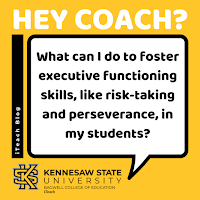Getting Started with Global Connections in the Classroom
I want my students to be aware of the world outside of our classroom by learning with individuals from different countries and cultures. How can I connect with educators around the world who would be willing to partner with my students?
Sincerely,
Craving Global Connections
Dear Craving Global Connections,
I applaud you for working to flatten the walls of your classroom! Global collaboration offers many benefits to students, including developing communication skills, building empathy and a sense of interconnectedness, teaching students to overcome barriers and form bridges to other cultures, and preparing students for increasingly globalized workplaces.
In 2018, the Organisation for Economic Co-operation and Development (OECD) and the Center for Global Education at Asia Society released a publication entitled Teaching for Global Competence in a Rapidly Changing World. It provides guidance to educators as they work to integrate global competence into their teaching. Within the report, OECD and the Center for Global Education identify four key areas of global competence.
Globally competent youth:
- investigate the world beyond their immediate environment by examining issues of local, global, and cultural significance;
- recognize, understand, and appreciate the perspectives and world views of others;
- communicate ideas effectively with diverse audiences by engaging in open, appropriate, and effective interactions across cultures; and
- take action for collective well-being and sustainable development both locally and globally.
Global collaboration allows us to establish a foundation of diversity, inclusion, and equity, which in turn supports all learners as they work to reach their full potential.
As Stephanee Stephens and Anisa Lokey-Vega describe in the white paper, A Vision for Personalized Learning, “Personalized learning requires a commitment to serve all students in a meaningful manner… through embracing that which makes each person unique including but not limited to their race, gender, ethnicity, culture, age, learning challenges, talents, interests, abilities, and voice.” When we open our classroom doors to the world around us, we build a classroom culture that values and respects diverse perspectives. Global collaboration allows us to establish a foundation of diversity, inclusion, and equity, which in turn supports all learners as they work to reach their full potential.
It’s clear that the benefits of global collaboration are many... but it’s a big world out there, so getting started can feel overwhelming! Lucky for us, there are some simple strategies that educators can use to make the process more manageable. When you’re ready to get started with global collaboration, try these tips on for size:
Tap into existing projects: There’s a wealth of available resources designed to make it simple and easy for classrooms to connect with each other. They’ve done all the planning - all you have to do is join!
- PenPal Schools connects students from more than 150 countries together as they investigate a topic then collaborate to create a project that shows what they learned.
- The Global Read Aloud takes place during a set 6-week period two times each year. During this time, classrooms around the world read aloud the same book and work to make as many global connections as possible while reading.
- TakingITGlobal for Educators offers a free online platform for classrooms to complete collaborative projects focused on shaping a more inclusive, peaceful, and sustainable world.
- One World Classrooms hosts programs that aim to build bridges of learning and understanding between local and global classrooms through the arts and technology.
- iEARN features over 150 collaborative projects designed to connect classrooms around the world.
- Edublog’s Student Blogging Challenge occurs twice each year. Participating classes complete eight weekly tasks in order to improve blogging and commenting skills while connecting with a global audience.
- ePals connects K-12 classrooms in more than 99 countries to share ideas and collaborate on projects, including pen pal exchanges.
- Empatico features a platform that connects classrooms around the world to complete standards- and research-based activities that fit easily into existing curriculum.
- Exploring by the Seat of Your Pants hosts more than 25 Google Hangout events each month, allowing classrooms to connect with leading scientists and explorers across the globe.
- During the Awesome Squiggles global art challenge, students create original art based on four squiggly lines and then share their artwork around the world.
- Each year, students around the world connect to exchange Virtual Valentines while building geographical awareness and cultural understanding.
- Check out the Skype in the Classroom community. Here, you can find a catalog of classroom to classroom connections, virtual field trips, guest speakers, and live collaboration projects. If you’re new to Skype, you might find our Skype Crash Course document helpful as you get started.
- If you aren’t already using Flipgrid, now is the time! By simply activating the #GridPals feature in your profile, you can connect with a network of educators who want to create meaningful global learning experiences. Read this #GridPals Adventure Passport for a step-by-step guide to getting started.
As you can see, there are so many possibilities to build global competence in the classroom. Find an avenue that aligns with your instructional goals and jump in! Before you know it, you and your students will be connecting and collaborating beyond the classroom walls with ease.
Best wishes,
Coach
Contributing Coach Anna Bilyeu
 |
| Building Global Connections |



Comments
Post a Comment